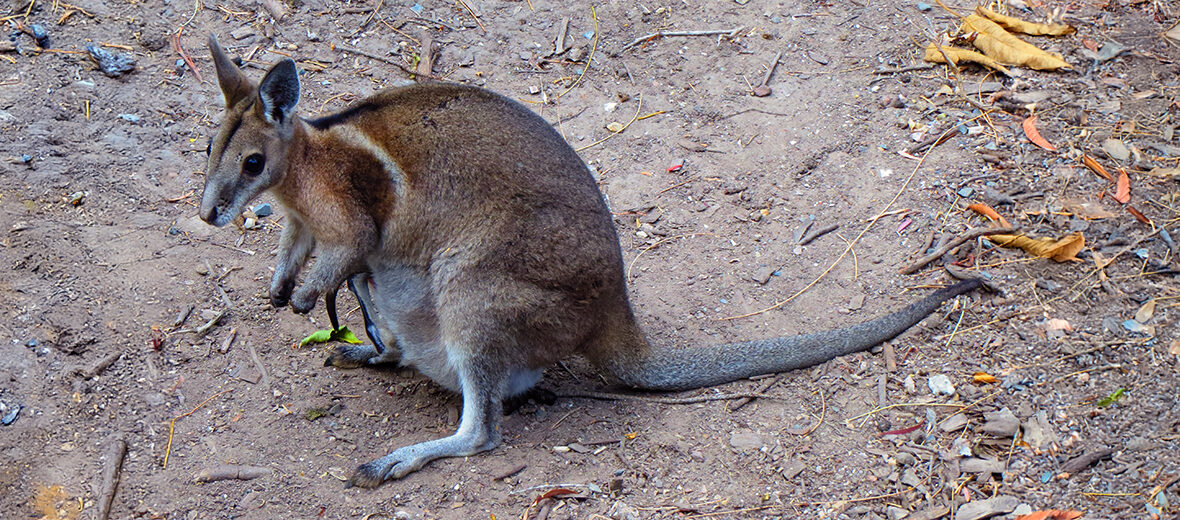
The bridled nail-tail wallaby, aka bridled nail-tailed wallaby, bridled nailtail wallaby, bridled wallaby, merrin, or flashjack, is a small wallaby found in 3 remote areas in Queensland, Australia. These wallabies face the threats of habitat loss and destruction at the hands of farming, ranching, fires, and fire suppression; invasive species, & with them disease and predation; as well as climate change, that can cause severe droughts. The IUCN lists these critters as Vulnerable. Their population trend is listed as stable.
First the Stats…
Scientific name: Onychogalea fraenata
Weight: Up to 17.64+ lbs.
Length: Up to 28+ inches, plus up to a 29+ inch tail
Lifespan: Up to 12 years
Now on to the Facts!
1.) There are only an estimated 500 wild and 2,285 captive nail-tail wallabies remaining to date.
2.) It is with some contention that these wallabies were first described by John Gould in 1840.
3.) Gould originally gave these critters the common name of bridled kangaroo.
4.) These marsupials are both nocturnal (active at night) and crepuscular (active at dawn and dusk).
5.) While normally solitary, small mobs of up to 4 individuals may gather to feed, if food is in short supply.
But wait, there’s more on the bridled nail-tail wallaby!
6.) These wallabies are sometimes eaten by humans, and the meat is described as excellent tasting.
7.) A group of wallabies is called a court, mob, herd, or troop.
Did you know…?
They possess up to a .24 inch tail spur that is partially covered with fur. The purpose of this spur is not certain.
8.) Females undergo up to a 23 day gestation (pregnancy) that yields a single Joey.
9.) The joey, once born, migrates to their mother’s marsupium (pouch) to continue development for an additional 4 months.
10.) When threatened by native predators they usually lie flat on the ground and find cover. However, in 2021 it was documented that in response to introduced predators like feral cats and foxes, they had altered their predator response and had learned to hide in reaction to the mere scent of the foreign predators.
But wait, there’s still more on the bridled nail-tail wallaby!
11.) Having a stronger immune system than other macropods, these wallabies seem to be able to survive parasitic infections, viruses, and various other diseases more readily than other marsupials.
12.) During the time of the European settlement of Australia, these wallabies were common all along the eastern Australian coastline region to the west of the Great Dividing Range. Then in the late 19th and early 20th centuries there were no confirmed sightings. Between 1937 – 1973 they were thought to be extinct.
Did you know…?
Since their rediscovery, they have been the subject of private conservation efforts to re-establish viable populations. Captive breeding programs established 3 populations in Queensland.
13.) As of 2001, the range of these critters was estimated to be less than 5% of their original range.
14.) In the early 1900s they suffered exponentially from shooting, for their fur and because they were considered a pest.
15.) Dingoes and wedge-tailed eagles are their natural predators.
Now a Short Bridled Nail-Tail Wallaby Video!
Be sure to share & comment below! Also, check out the Critter Science YouTube channel. Videos added regularly!
Want to suggest a critter for me to write about? Let me know here.
Some source material acquired from: Wikipedia & IUCN
Photo credit: Diver Dave




